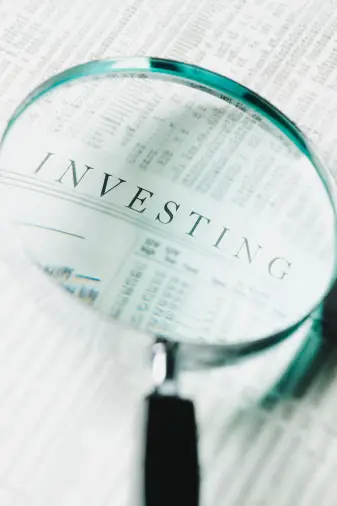Value Stock Investing - A Warren Buffett Investment Strategy
Value stock investing simply means buying a stock, or indeed a business, at less than its intrinsic value; this strategy was also adopted by legendary investor Warren Buffett.
Value stock investing is one of the best known stock investing strategies. The concept is actually very simple: find companies trading below their inherent worth. While the efficient market hypothesis claims that prices are always reflecting all relevant information, and therefore are already showing the intrinsic worth of companies, value investing relies on a premise that opposes that theory. Value investors look for times of inefficiency, when the market assigns an incorrect price to a stock.
The value investor looks for stocks with strong fundamentals - including earnings, dividends, book value, and cash flow - that are selling at a bargain price, given their quality. The value investors seek companies that seem to be incorrectly valued (undervalued) by the market and therefore have the potential to increase in share price when the market corrects its error in valuation. Value stock investing strategy was also adopted by legendary investor Warren Buffett.
Price Decline Does Not Necessary Mean a Bargain

It's important to distinguish the difference between a value company and a company that simply has a declining price. A sudden drop in the share price of the company does not automatically mean that the company is selling at a bargain. The drop in price could be a result of the market responding to a fundamental problem in the company. Value stock investing always compares current share price to intrinsic value not to historic share prices.
Value Stock Investing Means Buying a Business, Not a Stock
Value stock investing mentality sees a stock as the vehicle by which a person becomes an owner of a company; to a value investor profits are made by investing in quality companies, not by trading. Because their method is about determining the worth of the underlying asset, value investors don't care about the external factors affecting a company, such as market volatility or day-to-day price fluctuations. These factors are not inherent to the company, and therefore are not seen to have any effect on the value of the business in the long run.
Searching For Value Stocks
Value stocks can be found anywhere. They can be trading on the NYSE, Nasdaq, AMEX, over the counter, on the FTSE, Nikkei and other markets, they can be located in any industry, including energy, finance and even technology; most often you can find value stocks in industries that have recently fallen on hard times, or are currently facing market overreaction to a piece of news affecting the industry in the short term. But again, be aware that a company which stock has just hit a new 12-month low doesn't automatically mean it is undervalued, it may warrant further investigation and comparison between intrinsic and market value.
Value Stock Investing Guides
As the value investor is trying to find good companies with strong growth and earnings potential that have been overlooked by the market somehow, a lot of homework and analysis must be done. A number of factors are used to determine the true value of a company. Some of the most often followed guides for picking value stocks are:
- P/E ratio (Price-Earnings ratio) should be at the lowest 10-20% of all stocks.
- PEG ratio (Price-Earnings-Growth ratio) should be less than one.
- Earnings growth should be at least 7% p.a. over the last 5 years.
- Stock price should be less than or equal to tangible book value.
- There must be more equity then debt in the balance sheet (D/E ratio < 1).
- Current assets should be 2x current liabilities.
- Stock price should be less than 2/3 of intrinsic worth.
- Dividend yield should be at least 2/3 of the long-term AAA bond yield.
Value Stock Investing and Income Statement Ratios
The P/E ratio can be used to determine how the earnings of a business compare with the current share price. Value stock investing is not simply about investing in low P/E stocks; it's just that stocks which are undervalued will often reflect this undervaluation through a low P/E ratio, which should simply provide a way to compare companies within the same industry. Lower P/E than industry average should sound some bells in the heads of value investors.
Another popular metric for valuing a company's intrinsic value is the PEG ratio, which measures how cheap the stock is while taking into account its earnings growth. If a company can maintain 7-10% earnings growth over a period of 5 years or more, then a value investor would consider this a value stock with the prospect of solid future earnings growth as well. The higher the PEG number, the more expensive the investment and the less likely a value investor will be interested in owning stock in that company. If the company's PEG ratio is less than one, it is considered to be undervalued.
Value Stock Investing and Balance Sheet Ratios
If a company is trading below the book value, the buyer is essentially getting all the permanent assets of the company (including property, equipment, etc) and the company's intangible assets (mainly goodwill) for the stock price, those carrying less risk with investment. If a company is trading below two-thirds of its current assets, you get all the permanent and intangible assets of the company even for free. Value stock investors also filter companies with too much leverage - more debt compared to equity, since they carry to much risk, which is especially visible in times of economic downturn.
Stock Price Compared to Intrinsic Value
The method used to calculate the intrinsic value of the stock can be based on discounted future cash flows or of asset values. It looks very simple: add up all the assets and then subtract any outstanding debt and financial obligations - whatever remains is the value of the company. But value investor's needs to look even beyond the obvious assets and market position of businesses. The most difficult part of determining company worth is valuing corporate "intangibles", such as intellectual property, trademark, developing technology and similar. Sometimes, these corporate "intangibles" do not even show up on the financial statements.
Whatever method you will use to determine stock intrinsic value, stock price should be less than 2/3 of intrinsic worth, and the latest should be corrected with some margin of safety. This is a good practice of leaving room for error in your calculations of intrinsic value, which is the biggest problem for value investing, since there is no "correct" intrinsic value. Two investors can be given the exact same information and place a different value on a company. If the stock's intrinsic value is lower than the investor estimated, the margin of safety would help prevent this investor from paying too much for the stock.
Written by: Goran Dolenc
Do you find this content useful? Like! Tweet! Recommend! Share!
Back from Value Stock Investing to Stock Market Trade
Back from Value Stock Investing to Best Online Trading Site for Beginners home page







